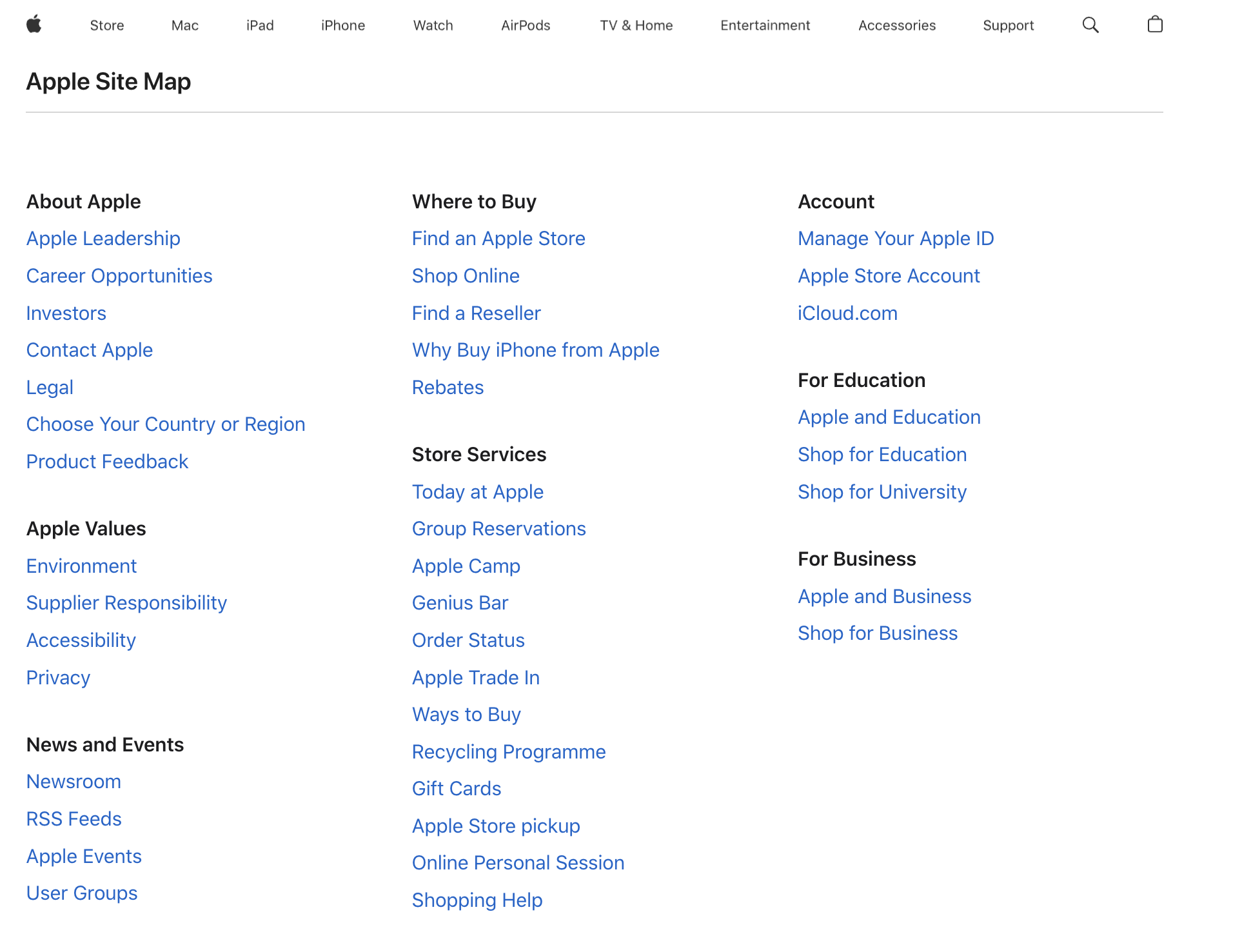HTML Sitemap
The HTML Sitemap serves as a navigational guide, detailing and categorizing the various sections of your website for user convenience and better understandability. It is an integral component in enhancing user experience, enabling easier navigation through the structured layout of your website’s content.
What is an HTML Sitemap?
An HTML Sitemap is like the blueprint of a building, providing a structured overview of your website's content and organization. This sitemap is essentially a plain text version of the site's navigation, represented in a hierarchical format, typically linked to your website's main sections and subsections. Its primary audience is website visitors, aiming to improve user experience by providing a user-friendly navigation scheme.

Why is an HTML Sitemap Important?
- It aids users in navigating through the website with ease, especially in cases where the website navigation is complex.
- It can assist search engines in understanding the site's structure, although its impact on SEO is less direct than XML sitemaps.
- It is particularly beneficial for websites with many pages or intricate structures, simplifying user navigation and improving user experience.
Understanding HTML Sitemap in Action
When users land on a website, an HTML Sitemap acts as a roadmap, assisting them in finding the information they are looking for effortlessly. This sitemap categorizes the website's content into organized sections, allowing users to navigate to their desired page without getting lost in many web pages.
Creating an HTML Sitemap: Steps for Structured Navigation
- List All Pages: Start by listing all the pages on your website.
- Organize the Pages: Arrange the pages in a logical and hierarchical manner, creating categories and subcategories as needed.
- Create Links: Turn each listed page into a clickable link to the corresponding webpage.
- Place the Sitemap: Position your HTML Sitemap on your website, commonly in the footer, to allow easy access for users.
- Update Regularly: Ensure the sitemap is updated whenever new pages are added, or existing ones are removed.
Do's and Don'ts for HTML Sitemap
✅ Do's- Keep It Updated: Regularly update the sitemap to include new pages and remove obsolete ones.
- Organize Logically: Arrange the links logically, with clear categories and subcategories.
- Make It Accessible: Ensure that the sitemap is easy to find, typically by placing it in the website footer.
- Neglect the User: Do not create a confusing and hard-to-navigate sitemap; keep the user in mind.
- Overcomplicate: Avoid making the sitemap too intricate; simplicity is key.
- Ignore Maintenance: Do not forget to maintain the sitemap, keeping it in sync with the current structure of the website.
Conclusion
The HTML Sitemap is the unsung hero of user-friendly web navigation. By offering a neatly organized and accessible overview of a website’s content, it ensures that users can easily find what they are looking for, enhancing overall user satisfaction and experience.
FAQs on HTML Sitemap
An HTML Sitemap aims to provide a user-friendly, organized overview of a website’s content, facilitating easier navigation for users.
While both serve as navigational aids, an HTML Sitemap is designed primarily for human users, focusing on user-friendly navigation through the website's content, whereas an XML Sitemap is structured for search engines, aiding them in crawling and indexing the website’s pages.
While an HTML Sitemap’s direct impact on SEO is minimal, it can indirectly benefit SEO by improving the user experience and assisting search engines in understanding the website's structure.
An HTML Sitemap is typically placed in a website's footer to allow users easy and ubiquitous access.
